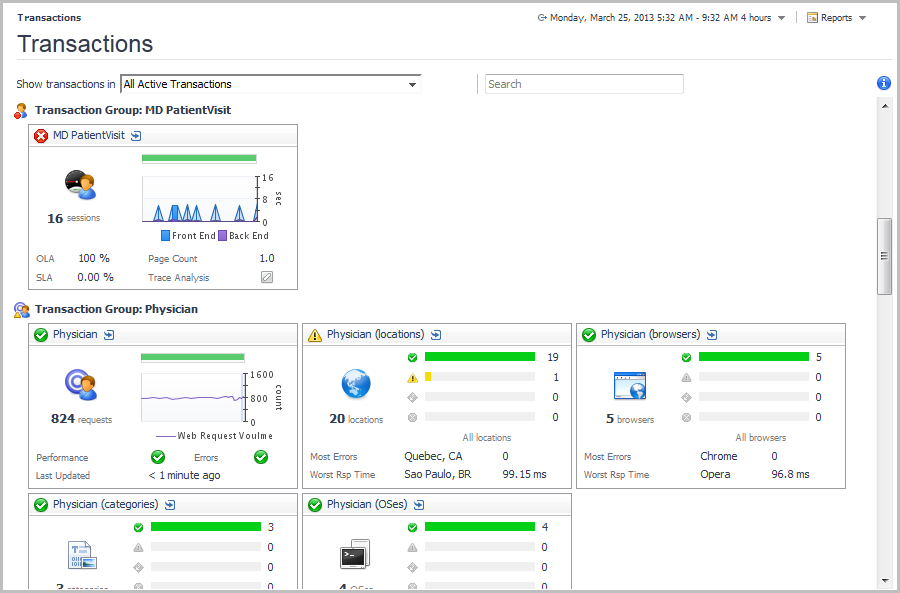Introducing Foglight APM
This User and Reference Guide provides an overview of Application Performance Monitoring (APM) with Foglight for Application Operations and Foglight APM for Real User Experience (hereafter called Foglight APM). It includes conceptual information to help you envision an APM installation with Foglight and overviews of the Service Operations Console (SOC) and other applicable dashboards that help you manage your unified APM installation.
|
• |
Foglight Administrator — responsible for configuring and managing Foglight, and for performing administrative tasks. |
|
• |
Application Performance Manager — responsible for the design, implementation, and execution of the APM strategy. |
|
• |
Application Support — responsible for ensuring that application services are performing as expected. Identifies and triages service degradations or outages. |
|
• |
Platform Specialist or Administrator — responsible for the operation of an individual application component (for example, a database, a host, an application server, or a web server). Receives and responds to Foglight alarms on their platform or domain. |
|
• |
Application Architect — a senior escalation resource who is typically engaged by Application Support for assistance in locating the source of an application issue. |
|
• |
Application Developer — responsible for the application code. Uses the Foglight transactional performance dashboards to gain understanding of the operational execution and performance of their code. |
For more information, see the following topics:
Understanding the Foglight APM implementation
Before you implement an APM strategy, it is important to perform proper requirement gathering, environment sizing, project planning, and scoping, just as you would with any other application. Our Professional Services team has developed a comprehensive strategy for APM implementation. You can review our process online at:
http://support.software.com/professional-services-product-select/.
Foglight requirements for APM workflows
|
• |
|
• |
Install the Foglight Management Server 5.7.5 or later and ensure that it is running. For more information, see the Foglight Installation and Setup Guide set. |
Monitoring Transactions
With the Transactions dashboard, you can examine transactional data in the following ways:
|
• |
The tiles on the Transactions dashboard represent different transactional views. Use the table below to quickly determine the type of transaction, then review Investigating real user APM transactions or Investigating application server transactions for an overview of how to drill down for more information.
For example, in the following image, the Physician group of tiles represents a real user perspective with pivot data. The performance summary on each tile includes an alarm state overview and other key metrics. For a full description of the metrics displayed on each type of tile, see APM Tile and View Reference.

